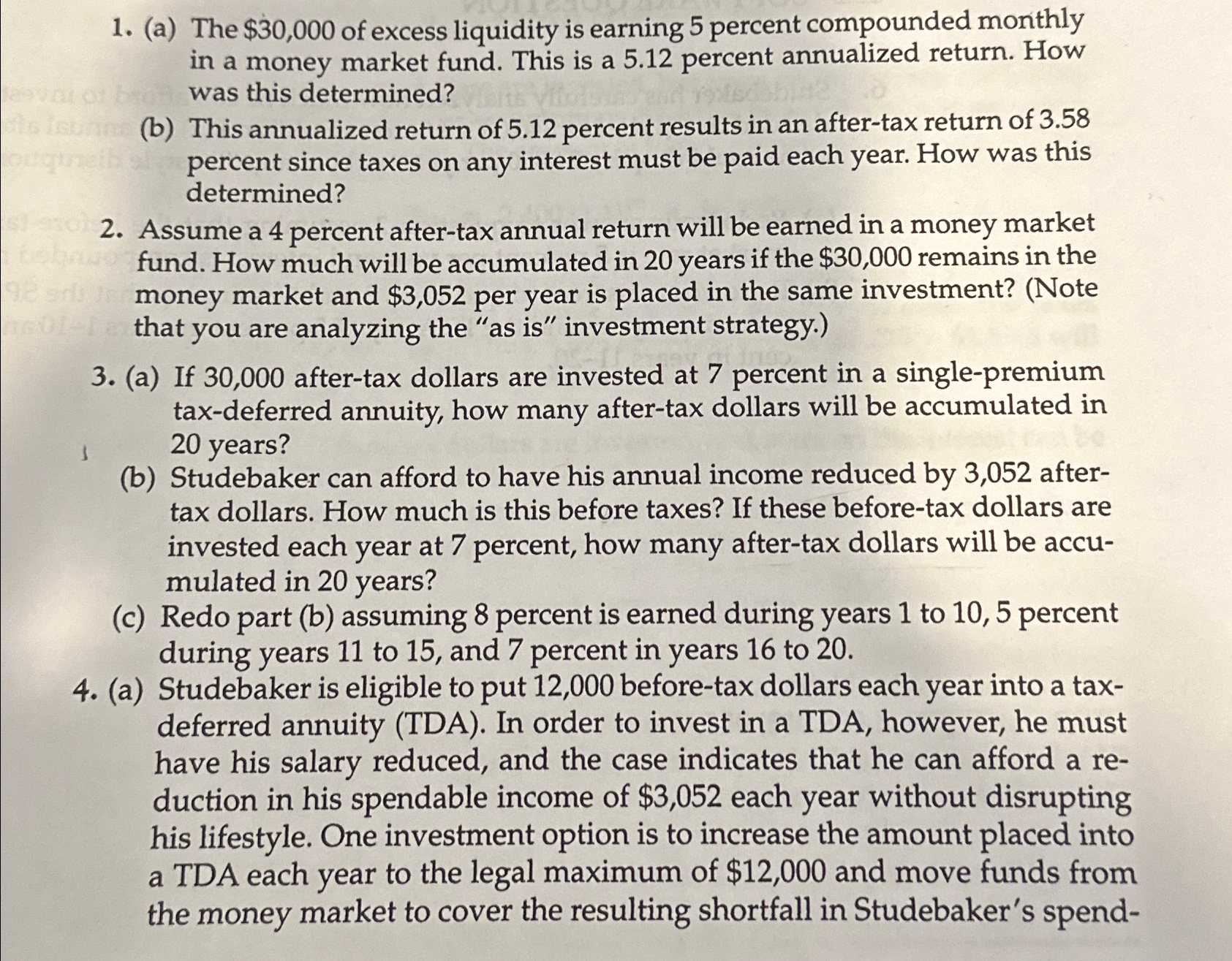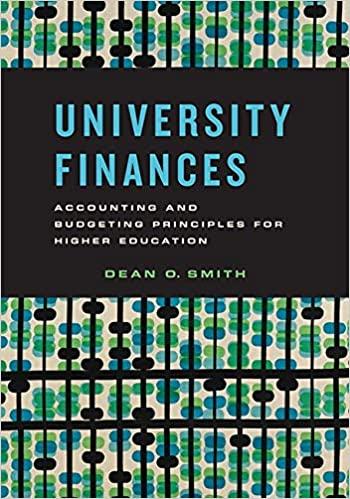Question
(a) The $30,000 of excess liquidity is earning 5 percent compounded monthly in a money market fund. This is a 5.12 percent annualized return. How
(a) The
$30,000of excess liquidity is earning 5 percent compounded monthly in a money market fund. This is a 5.12 percent annualized return. How was this determined?\ (b) This annualized return of 5.12 percent results in an after-tax return of 3.58 percent since taxes on any interest must be paid each year. How was this determined?\ Assume a 4 percent after-tax annual return will be earned in a money market fund. How much will be accumulated in 20 years if the
$30,000remains in the money market and
$3,052per year is placed in the same investment? (Note that you are analyzing the "as is" investment strategy.)\ (a) If 30,000 after-tax dollars are invested at 7 percent in a single-premium tax-deferred annuity, how many after-tax dollars will be accumulated in 20 years?\ (b) Studebaker can afford to have his annual income reduced by 3,052 aftertax dollars. How much is this before taxes? If these before-tax dollars are invested each year at 7 percent, how many after-tax dollars will be accumulated in 20 years?\ (c) Redo part (b) assuming 8 percent is earned during years 1 to 10,5 percent during years 11 to 15 , and 7 percent in years 16 to 20 .\ (a) Studebaker is eligible to put 12,000 before-tax dollars each year into a taxdeferred annuity (TDA). In order to invest in a TDA, however, he must have his salary reduced, and the case indicates that he can afford a reduction in his spendable income of
$3,052each year without disrupting his lifestyle. One investment option is to increase the amount placed into a TDA each year to the legal maximum of
$12,000and move funds from the money market to cover the resulting shortfall in Studebaker's spend-

Step by Step Solution
There are 3 Steps involved in it
Step: 1

Get Instant Access to Expert-Tailored Solutions
See step-by-step solutions with expert insights and AI powered tools for academic success
Step: 2

Step: 3

Ace Your Homework with AI
Get the answers you need in no time with our AI-driven, step-by-step assistance
Get Started


